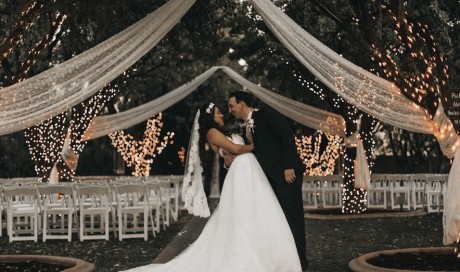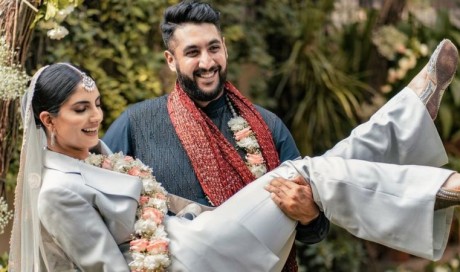Toraja is dotted with villages perched high on the side of cliffs or nestled deep in the valleys below. Rantepao, a dusty town of 26,000, is reached mainly via an eight-hour trip from Sulawesi’s largest city, Makassar, on 200 miles of corkscrewing, cliff-hugging road. The villages in turn are connected only by winding, one-lane dirt paths carrying two-lane traffic that dodges dogs and toddlers along routes pocked with head-banging, watermelon-size ruts.
I made the rough trek here after years spent writing and speaking about an American way of death that glorifies medicine and drugs but fears death, which it considers a failure of technology or will. That leaves most Americans dying in institutions, when the majority say they would prefer to die in peace at home. After my husband, Terence, died, I began seeking alternatives. I have come here to explore a culture that is even more extreme, but in the opposite direction.
Toraja Heartland
Nearly half a million Torajans live in the highlands of the Indonesian island of Sulawesi. The vast majority, at least 90 percent, are Christians, but they remain influenced by their traditional religion, Aluk To Dolo, or Way of the Ancestors.

There are obvious limits to my search. Feeding the dead, letting bodies hang around, and opening coffins aren’t practices the rest of us will likely adopt anytime soon. Even so, I can’t help wondering if the more gradual rhythm and pacing of Torajan death practices don’t hew more closely to the actual racking and shuddering experience of human grief than do our own more buttoned-up rituals.

Seeing, talking to, and feeling the presence of a dead loved one are commonplace in the West, write Colin Murray Parkes and Holly G. Prigerson in Bereavement: Studies of Grief in Adult Life. “I talk to him and quite expect him to answer me,” they quote one widow as saying. Grief itself, they say, doesn’t follow a clean trajectory but rather erupts and calms in cycles over many years—just as Torajan death practices do. But the Western habit of sweeping the dead out of sight within days or even hours of death would seem far too abrupt to a Torajan. “My mother died suddenly, so we aren’t ready yet to let her go,” says Yohana Palangda, as she begins to weep. “I can’t accept burying her too quickly.” Her mother has continued to receive guests in an upstairs room for more than a year. Because Yohana’s mother was the village chief—a position Yohana now has—villagers continue to come to seek blessings for important events, or even permission to marry.
Michaela Budiman, an anthropologist at Charles University, in Prague, Czech Republic, writes that if the deceased in Toraja were buried immediately, it would be “as if a hawk careened suddenly upon its prey, snatching it in its talons and vanishing forever in the split of a second.”

So what is the difference between Yohana’s reluctance to let her mother go and our own? Or between Elisabeth’s conversation with her dead husband and the ones Western widows secretly hold with theirs? Or Elisabeth’s family’s feeding ritual compared with novelist Joan Didion’s reluctance to part with her dead husband’s shoes, lest he need them when he returns? The best thing to resolve grief is time. What if we, like the Torajans, gave ourselves more time to unspool it at its own rate?
A few days after my visit to the deceased Petrus Sampe and his wife, another man’s funeral is in full swing at the other end of town. I climb a shaded bamboo structure the family has built for out-of-town guests. I curl up on a rug next to a young teen, the granddaughter of the deceased. Dinda applies eyeliner. She fiddles with her smartphone. Everyone likes funerals, especially for the chance to meet faraway relatives, she says, as three younger cousins romp nearby, including around their grandfather’s coffin.
Hundreds of men, women, and children wander below or sit chatting in the shade of ancestral homes—called tongkonan—distinctive stilted structures that carpet the region, their giant curved roofs seeming to float like huge red boats on seas of palm, coffee trees, and bougainvillea.
The spaces between the tongkonan are cluttered with squealing pigs bound to bamboo poles, soon to become lunch. Women in slim black-and-white sheath dresses sell cigarettes. A motorcycle vendor hawks Mylar balloons. Sleek, fat water buffalo are everywhere, lounging under trees, standing alongside the road, or being walked in circles by young men who tend them as affectionately as they would pets. A master of ceremonies high in a tower above the crowd addresses a magnificent animal, its huge, gracefully curved horns as wide as a man is tall.

“You are the most important buffalo here,” he says. “You will go with this man to the next world and make him rich.”
A grand Torajan funeral is measured in the number and quality of buffalo, which serve as a form of currency. Everything about the funeral is hierarchical, cementing the status of the dead person’s family, the people who attend, and many who don’t. Today is near the end of more than a week of meals, receptions, meetings, prayers, entertainment, and carefully choreographed rituals separating the dead gradually from life. The body moves from the home into the family’s ancestral building, then into a nearby rice barn, then to the funeral tower overlooking the ceremonial plain.
...[ Continue to next page ]
Share This Post














